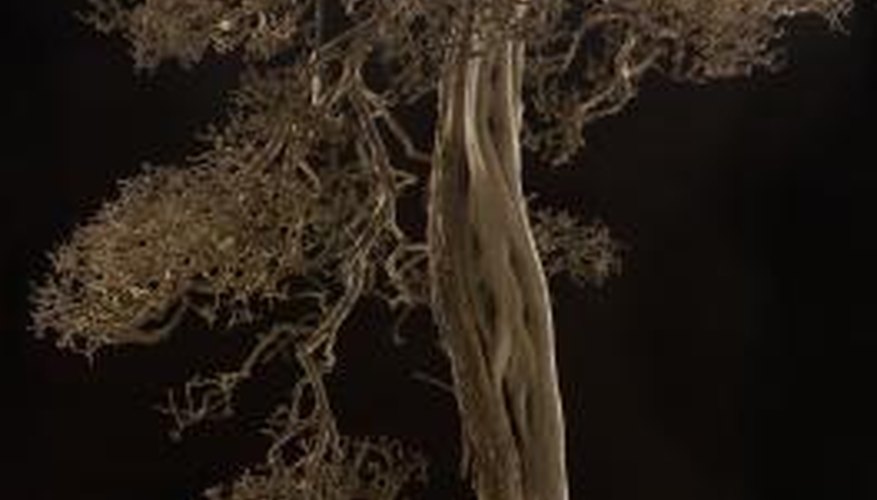Copper sulphate is a poison often used to discourage tree roots from growing into vulnerable areas such as sewer lines. It can, however, kill a whole tree if it is properly applied. Although you may be able to kill a tree by putting copper sulphate on the ground around it, the sulphate is toxic to the water supply and the ground, so this technique should be avoided. Instead, use the copper sulphate to poison the tree more directly.
- Copper sulphate is a poison often used to discourage tree roots from growing into vulnerable areas such as sewer lines.
- Although you may be able to kill a tree by putting copper sulphate on the ground around it, the sulphate is toxic to the water supply and the ground, so this technique should be avoided.
Peel back an inch or two of bark near the base of the tree. If the bark is too thick to peel, cut three sides of a square with a knife, opening up a small tab of bark.
Drill a hole in the tree at a downward angle under the bark. The longer and wider the hole, the more copper sulphate you will be able to pour in and the quicker you will be able to poison the tree.
Stick a funnel in the hole. Pour in copper sulphate until the hole is almost filled.
Remove the funnel and push the bark back into place to prevent the copper sulphate from being washed out by rain.
TIP
You can kill a tree easily and without toxins by girdling it. Cut straight through the bark and the layer immediately under the bark with a knife, saw or other cutting instrument. Move the knife around the tree all the way around. This action will destroy the tree's circulatory system, preventing water from flowing up from the roots to the leaves and sugar from flowing down to the roots.
